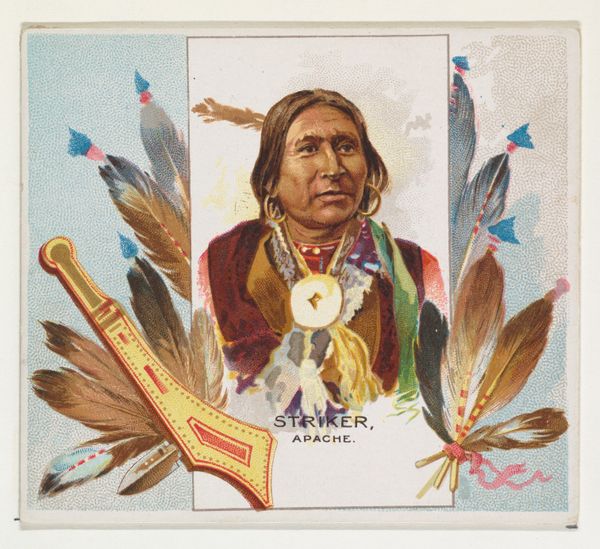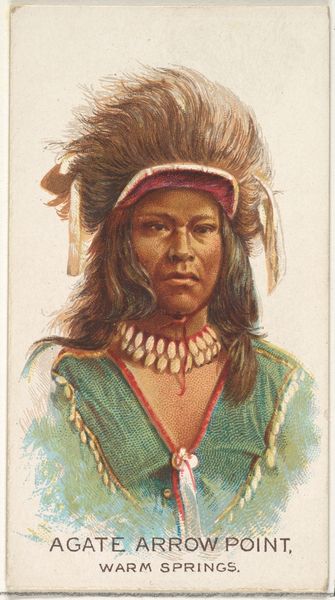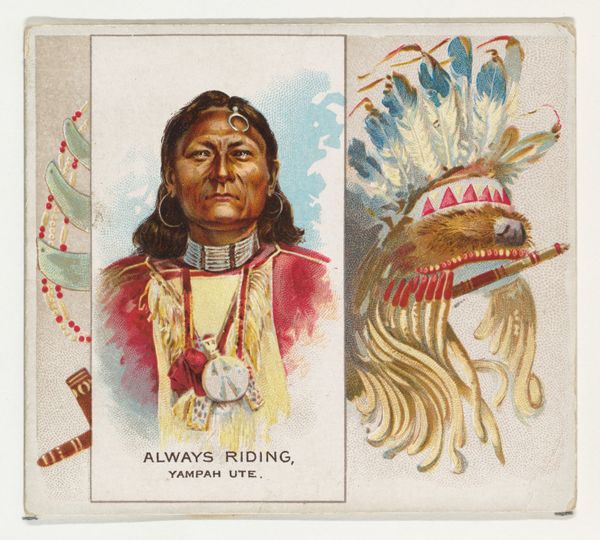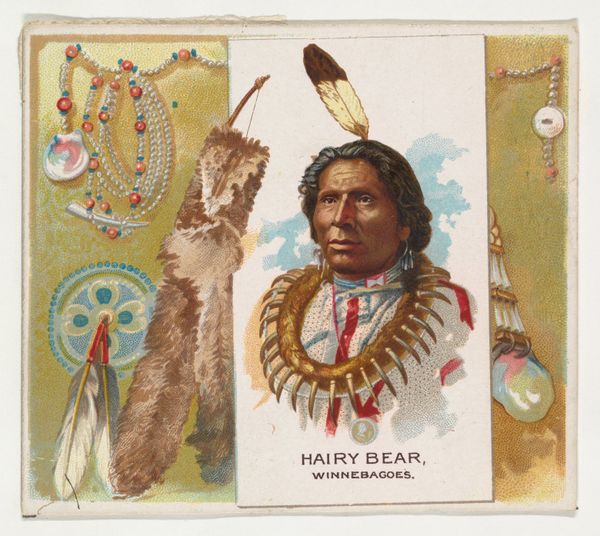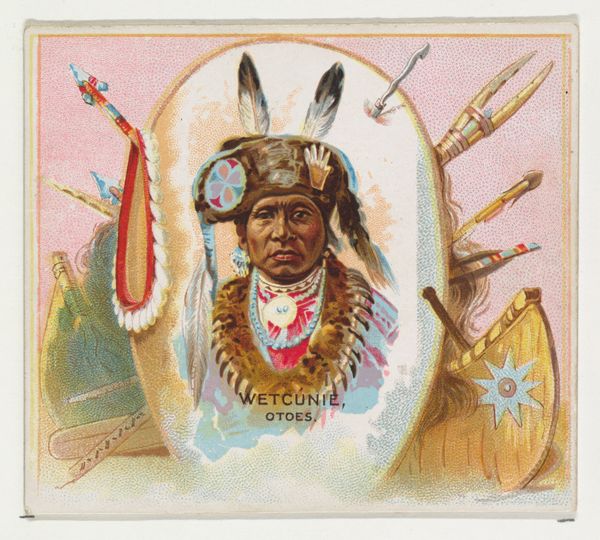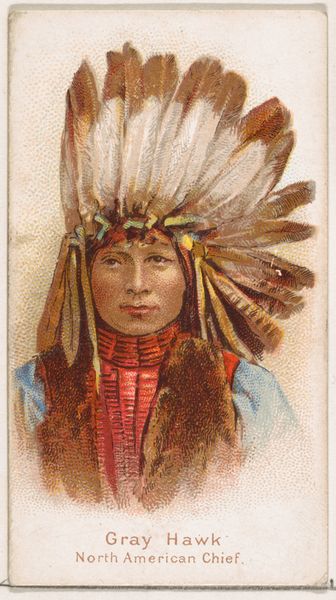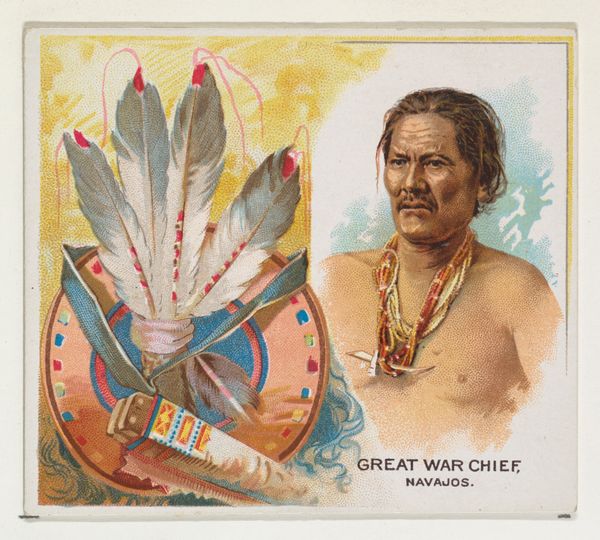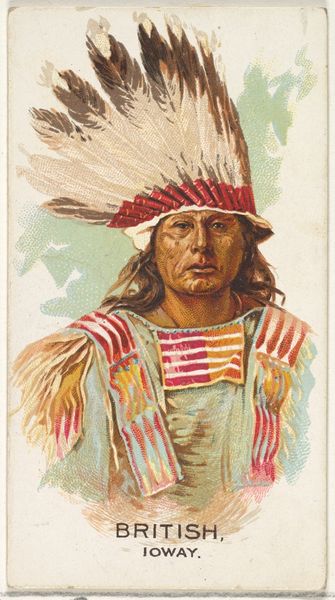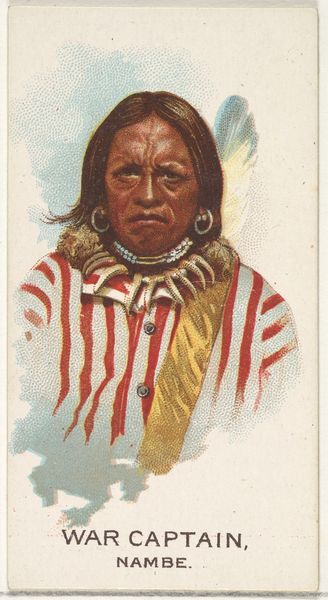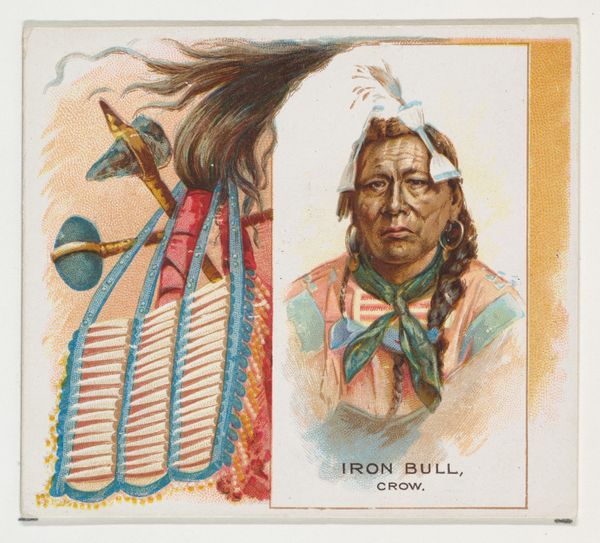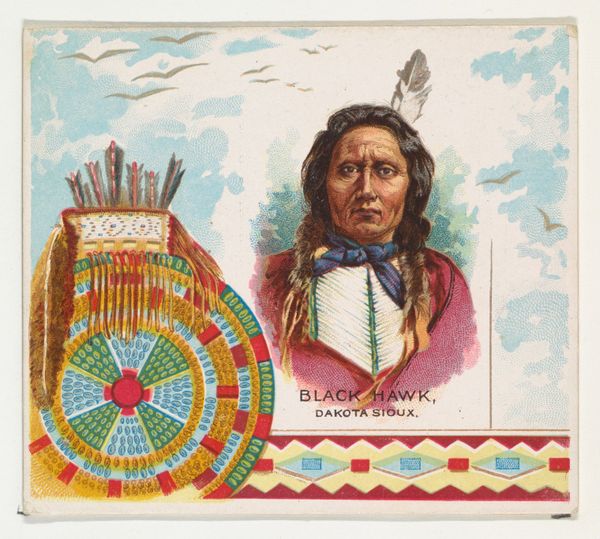
Agate Arrow Point, Warm Springs, from the American Indian Chiefs series (N36) for Allen & Ginter Cigarettes 1888
0:00
0:00
drawing, print, watercolor
#
portrait
#
drawing
#
16_19th-century
# print
#
caricature
#
watercolor
#
men
#
watercolour illustration
#
academic-art
Dimensions: Sheet: 2 7/8 x 3 1/4 in. (7.3 x 8.3 cm)
Copyright: Public Domain
Editor: This is "Agate Arrow Point, Warm Springs," from the American Indian Chiefs series by Allen & Ginter, dated 1888. It seems to be a watercolor and print on paper. It's a small card, and the man depicted looks stoic, but also slightly caricatured. What are your thoughts about this piece? Curator: The key to understanding this image lies in its material and context: it’s a cigarette card. Allen & Ginter mass-produced these collectible cards to stiffen cigarette packs and entice customers. Consider the labor involved: from cultivating tobacco to the printing and distribution of these cards. How does that industrial process affect your understanding of the image of "Agate Arrow Point"? Editor: It makes me think about cultural appropriation. Was the depiction of Native American chiefs just another commodity, packaged and sold along with cigarettes? It feels exploitative. Curator: Precisely. And consider the act of collecting itself. These cards weren't meant to be "high art;" they were ephemera, objects of trade and accumulation. But their value shifts when placed in a museum context, doesn’t it? Editor: Yes, it elevates the card, almost legitimizing the initial exploitation. What about the choice of materials—watercolor and print? Did that contribute to the mass appeal? Curator: Absolutely. Printmaking allowed for mass production, making these images widely accessible and disposable. Watercolor, with its perceived delicacy, might have added a veneer of respectability or artistry to what was ultimately a marketing tool. How does that inform your understanding of its value? Editor: It's a disturbing insight into the commodification of culture, using artistry as a guise. The labor and material were a means to further that exploitation. Curator: Indeed. Examining art through its means of production reveals power structures and economic forces often hidden within seemingly simple images. Editor: I’ve definitely learned to consider the industrial context and how it shapes even artistic choices. Thank you!
Comments
No comments
Be the first to comment and join the conversation on the ultimate creative platform.
